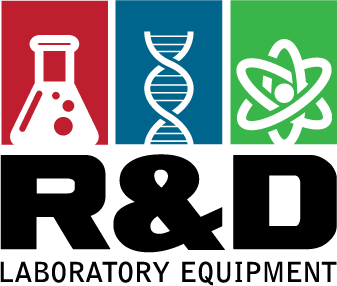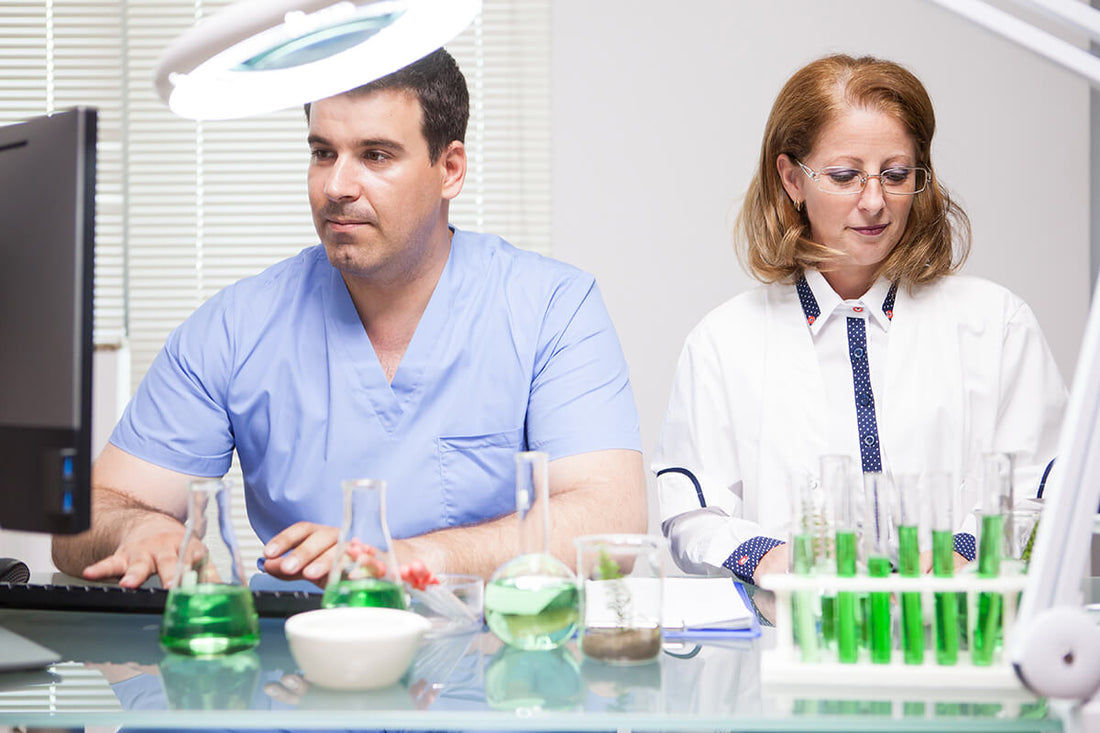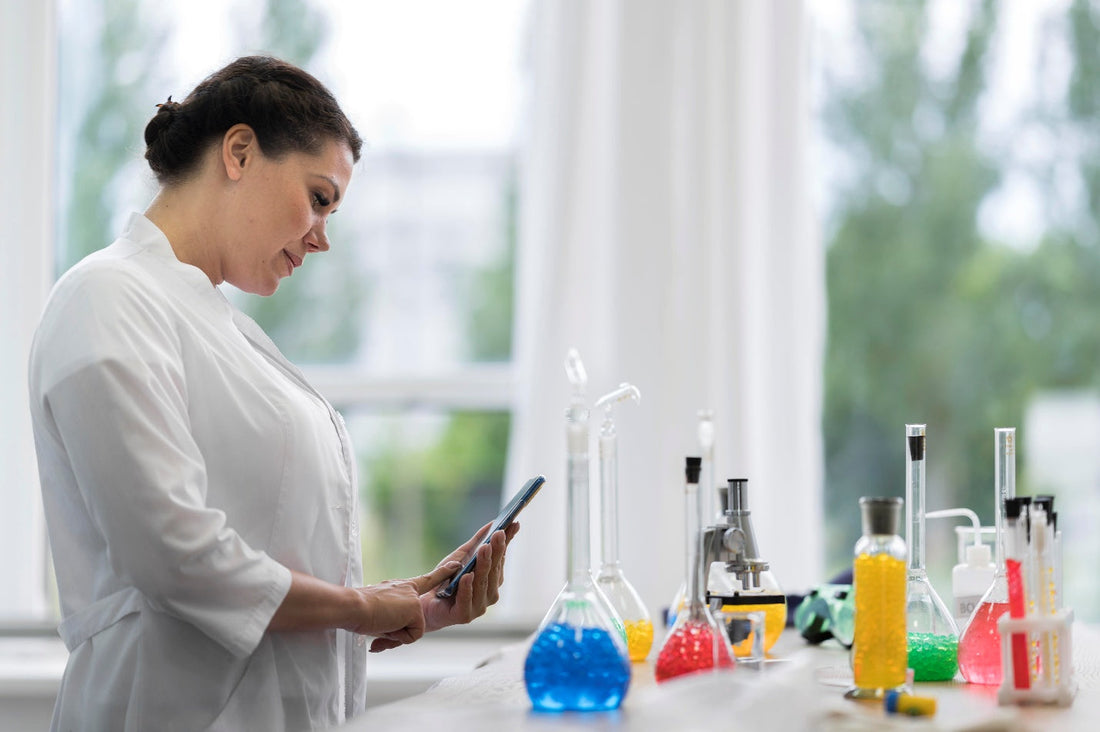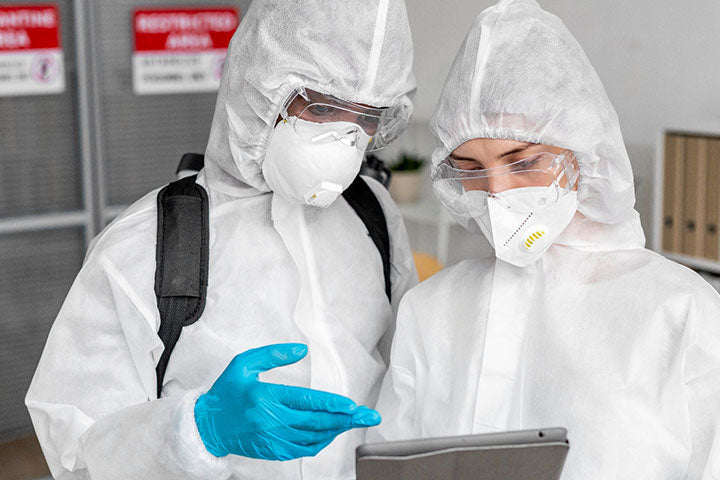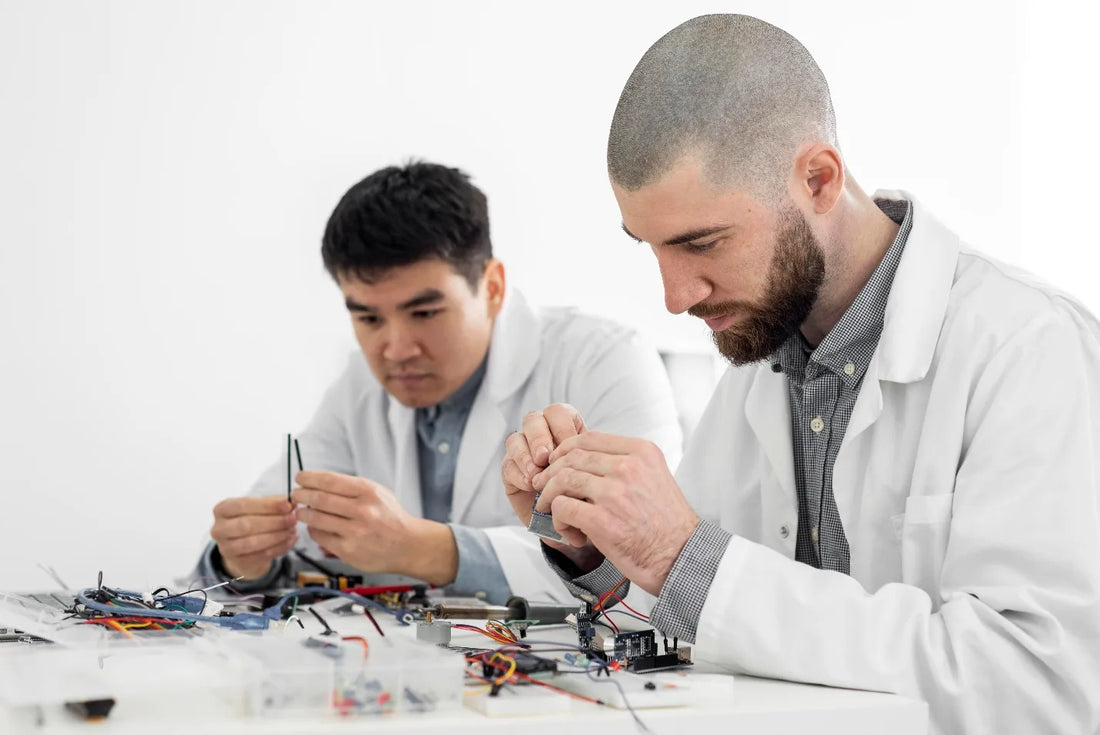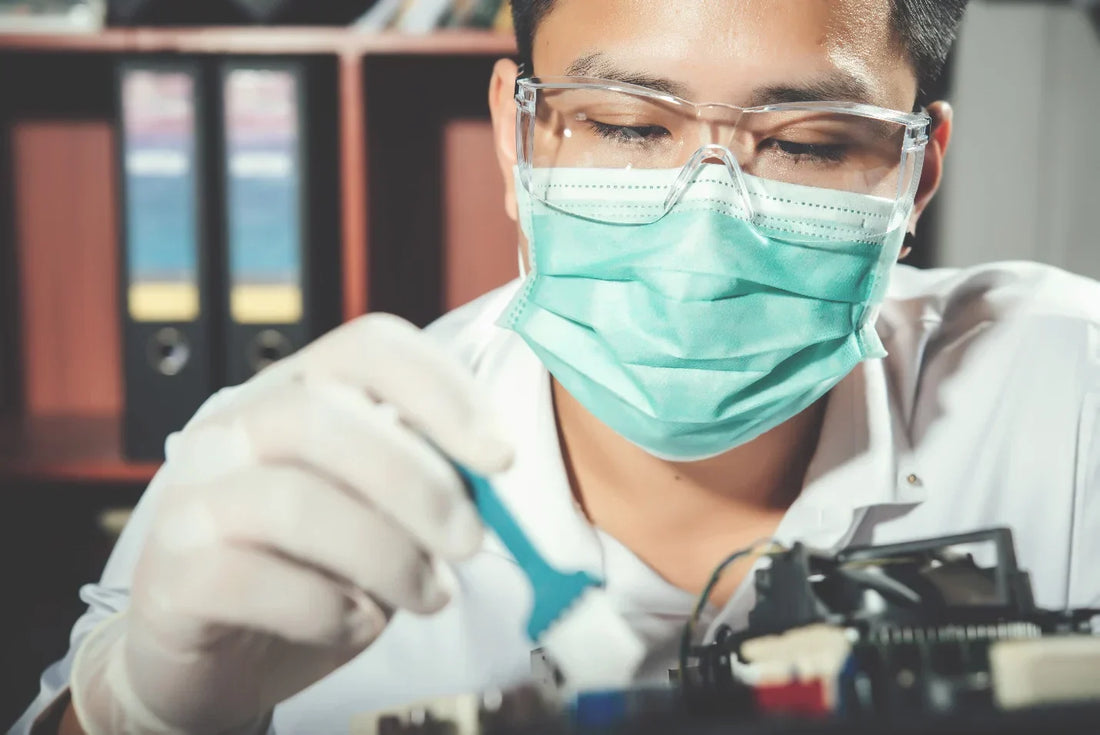The Hidden Dangers of Poor Bio Decontamination in Labs

Summary:
The dangers of poor decontamination in laboratories include cross-contamination and infection, inaccurate results, compliance issues, health hazards, and equipment damage.
Introduction
When it comes to managing and maintaining the integrity of a laboratory, compliance in all aspects of decontamination can be daunting. So, it is easy for managers to overlook or neglect a seemingly unimportant phase of decontamination.
Poor decontamination services affect research results and patients, personnel, and environmental health. R&D Laboratory equipment examines the hidden dangers of poor decontamination, including increased risk of contamination and cross-infection, compliance issues, and equipment malfunction.
Whether you are a lab manager, scientist, or research assistant, this article will emphasize the importance of decontamination, best practices, and tips for choosing the best cleaning company for your facility.
Understanding Bio Decontamination
Bio decontamination eliminates or neutralizes biological contaminants such as viruses, bacteria, and fungi from surfaces, equipment, and the laboratory environment. This process has revolutionized how we approach hygiene and safety in controlled environments.
Biological decontamination is critical in preventing the spread of pathogens and ensuring the integrity of research results. At its core, it involves using physical or chemical agents to destroy microorganisms. The effectiveness of a decontamination process depends on factors such as the type of contaminant, the surface material, and the chosen decontamination method.
There are different methods of biological decontamination, each tailored to specific conditions. They include:
-
Chemical Decontamination: This method uses chemicals and techniques such as hydrogen peroxide vapor, bleach, or alcohol to neutralize pathogens in the work area.
-
Thermal Decontamination: This method uses heat to eliminate biological contaminants. It is used to sterilize laboratory equipment, materials, and work areas that may be contaminated. The two main types of thermal decontamination are autoclaving and dry heat, which involve applying heat at high temperatures to neutralize biological contaminants.
-
UV Decontamination: This process uses ultraviolet light, specifically UV-C (wavelength between 180-280 nanometers), to disrupt the DNA and RNA of microorganisms such as bacteria, viruses, and fungi, preventing them from replicating and rendering them harmless. UV light is common for biosafety cabinet decontamination services, personal protective equipment (PPE), and lab equipment.
It is important to note that the choice of decontamination depends on the type of contamination, materials or equipment to be processed, and the level of sterility required. Effective decontamination is not just applying these methods, but ensuring they are carried out to regulations, consistently, thoroughly, and with documentation.
When decontamination is poorly understood or implemented, it creates serious threats to research, personnel, patient health, and the environment. Even trace amounts of biological substances can lead to contamination, false results, or outbreaks of infections.
The Hidden Dangers of Poor Bio Decontamination

The consequences of poor bio decontamination services may not be immediate, but they are severe, impacting health, safety, research quality, and institutional reputation.
1. Increased Risk of Contamination & Cross-Infection
Not following proper protocols for decontaminating equipment or laboratory areas can lead to the risk of contaminants spreading to other equipment and work surfaces. This effectively destroys the integrity of all research produced in the laboratory, leading to false results, failed experiments, and the need to repeat research processes to verify already established outcomes.
2. Compromised Research & Inaccurate Results
Even the smallest biological material can have disastrous effects on the research process and the integrity of results. False positives, contaminated results, and failed experiments are just a few of the hidden dangers in poor lab decontamination. These dangers can be potentially fatal, especially if they are crucial for patient treatment or lead to infections.
3. Health Hazards for Lab Personnel
Poor decontamination cleaning services can potentially endanger the health of lab personnel and other occupants in the building. For instance, using the wrong solution, not following containment protocols, or even inconsistent application of decontamination procedures can lead to equipment failure and the spread of infections.
4. Regulatory & Compliance Issues
Poor bio decontamination procedures in labs can lead to violations of local and international laboratory safety standards. Your business may then face sanctions, fines, loss of accreditation, or even legal proceedings if personnel, patient, or environmental health is compromised.
5. Equipment Damage & Malfunction
Inexperienced or untrained cleaners might use the wrong decontamination method or chemicals, causing damage to work areas and surfaces, leading to equipment damage and malfunction.
Similarly, neglecting lab equipment cleaning can affect the functionality of essential components, leading to reduced performance, wear and tear, rust, and eventually equipment breakdown.
Best Practices for Effective Bio Decontamination

To ensure the safety and integrity of laboratory operations, you must observe the best bio-decontamination procedures. These procedures will minimize the risk of contamination, ensure personnel safety, and ensure compliance with regulatory standards.
1. Cleaning
This is the first and most crucial step in any decontamination process. Lab equipment cleaning is usually achieved using water, detergent, and some mechanical action such as scrubbing. It removes dirt, soil, and other substances from equipment, while it might not remove all microorganisms, it significantly reduces the number of microorganisms on the object.
2. Disinfection
This uses chemical solutions to eliminate all microorganisms, except bacterial spores, on lab equipment or work areas. The effectiveness of disinfectants depends on the number of microorganisms, the amount of organic matter, the object to be disinfected, chemical exposure time, concentration, and temperature. A common disinfectant is hydrogen peroxide.
3. Sterilization
While cleaning and disinfection reduce the number of microorganisms in equipment, they don’t work for all contaminations. Sterilization uses a physical or chemical procedure to destroy all microbial life, including highly resistant bacteria and endospores. Standard sterilization methods include UV-C sterilization and steam and dry heat sterilization.
How to Choose the Right Decontamination Cleaning Services

Choosing the right decontamination services provider is essential for maintaining a safe, sterile, and compliant environment. Some tips for choosing the right services include:
1. Experience and Expertise
Look for a provider with a proven track record of cleaning various healthcare sectors, including hospitals, clinics, long-term care facilities, and laboratories. Experience in these diverse fields ensures the provider understands the specific needs and challenges of decontamination procedures.
Providers should also thoroughly understand biosafety levels (BSL), infection control, and pathogen-specific protocols.
2. Seek Recommendations
Word of mouth is often the best way to find reliable services. Ask colleagues, partners, or similar businesses that require the same services if they can recommend a cleaner they trust.
3. Conduct Online Research
Use search engines and review platforms like Google and Yelp to get cleaning services specializing in lab decontamination. Pay attention to reviews, comments, and their ratings to gauge the quality of their service and reputation.
4. Safety
The lab cleaning service will prioritize safety above all else. Their employees must all be trained and certified to handle, clean, and decontaminate volatile environments and equipment. The staff should have personal protective equipment (PPE) to prevent accidental contact with hazardous materials.
5. Certifications and Compliance
The right decontamination company must be licensed by relevant authorities, including the NIH and CDC, to handle lab equipment and hazardous materials. They must be trained in NIH/CDC biosafety cabinet decontamination guidelines, ISO 14644, and OSHA standards.
6. Response Time and Availability
Your lab decontamination services provider should be able to provide emergency services in case of accidental spills or contamination events. Choose a provider with 24/7 availability and emergency support services.
7. Documentation and Reporting
Reputable services provide documentation procedures, materials, validation results, and post-cleaning testing. Appropriate documentation is a necessary compliance requirement and crucial for internal quality control, audits, and inspections.
Conclusion
Choosing the right lab decontamination services provider is essential for maintaining the integrity and sterility of research environments. Poor decontamination or cleaning can result in faulty data, equipment damage, and endanger the health of lab personnel, patients, and the environment.
Cleaning your lab environment is also essential for maintaining a license and institutional integrity. For more information on proper decontamination protocols, contact R&D Laboratory Equipment experts.
FAQs
1. What are the biological hazards in a laboratory?
Biohazards in a laboratory include exposure to allergens, infections, and experimental agents such as viral vectors.
2. Why is biosafety and biosecurity important in laboratories?
Biosafety and biosecurity ensure that risks associated with research and development of harmful biological agents are minimized, preventing exposure to infections.
3. What are five biological hazards?
Common biological hazards include viruses, toxins from biological sources, spores, fungi, and pathogenic microorganisms.
4. What are the biggest hazards in a laboratory?
Chemical burns, heat burns, eye injuries, cuts from glassware, and inhaling dangerous gases are the most significant hazards in a lab environment.
5. What are biosecurity risks?
These are anything that can increase the impact of diseases or contaminants on the economy, environment, and community.
6. What are the five pillars of biosecurity?
A biosecurity program rests on inventory processes, physical security, personal reliability program, transport programs, and information security processes.
7. How to prevent biological hazards?
You can prevent biohazards in a lab environment by providing protective clothing to personnel, ensuring sufficient training in the handling, storing, or disposing of sensitive substances and equipment, and avoiding cross-contamination.
8. What are the routes of infection in microbiological labs?
Common routes of becoming infected in a laboratory include inhalation, cuts, and physical contact with contaminated materials.
9. What is the PPE for biohazards?
PPE for biohazards includes safety goggles for the eyes, gloves, a lab coat, or a biosafety level 4 positive pressure suit.
10. What precautions should be taken in a laboratory?
Food, drink, chewing gum, smoking, or vaping of any kind is prohibited in the lab. Also, ensure that you wear properly fitted personal protective equipment.
